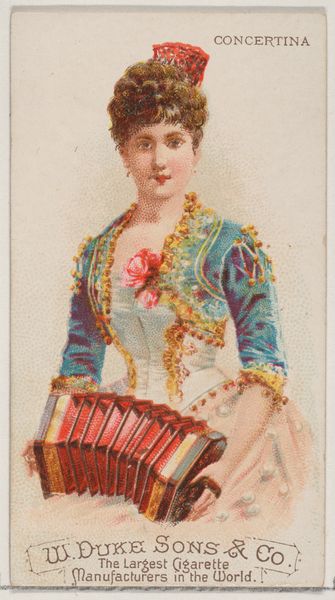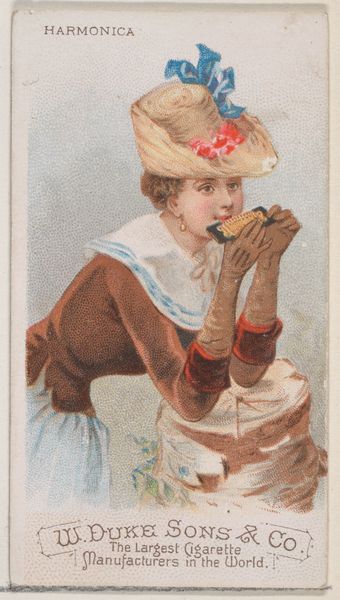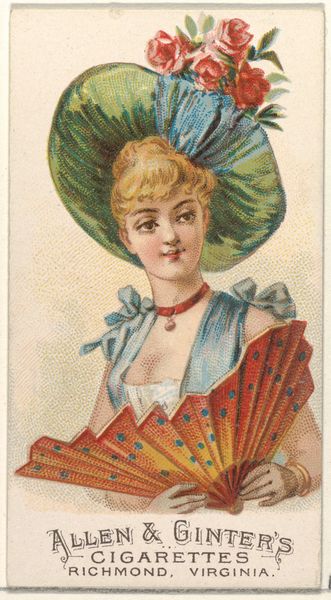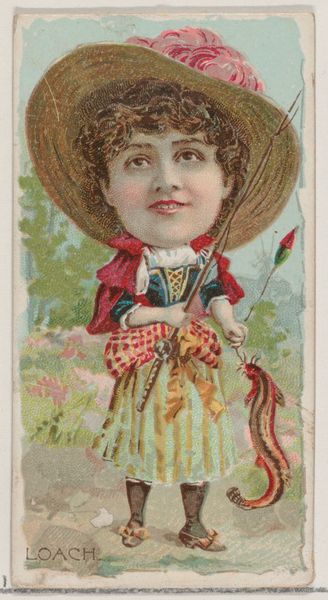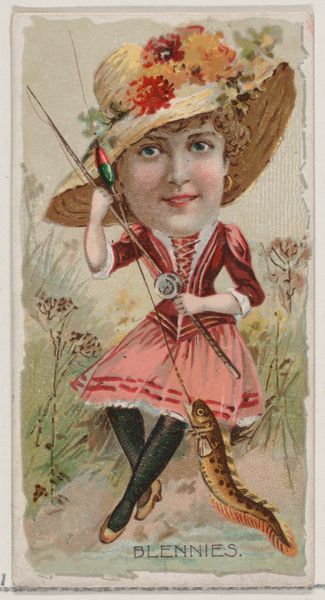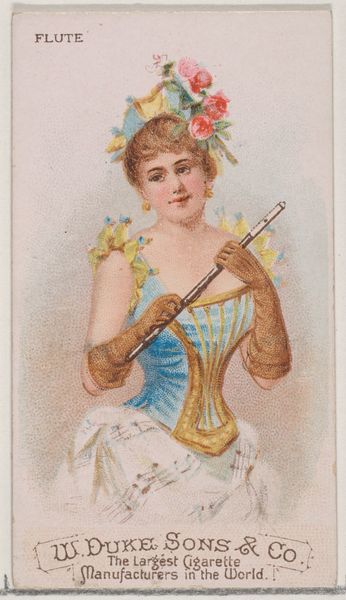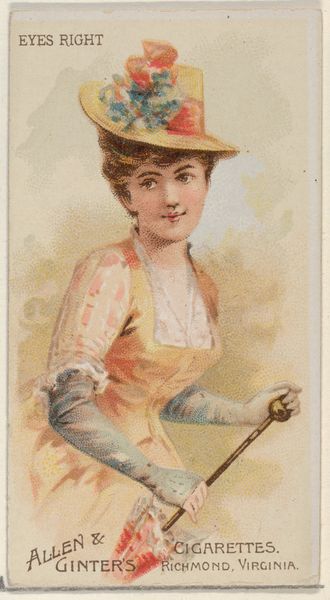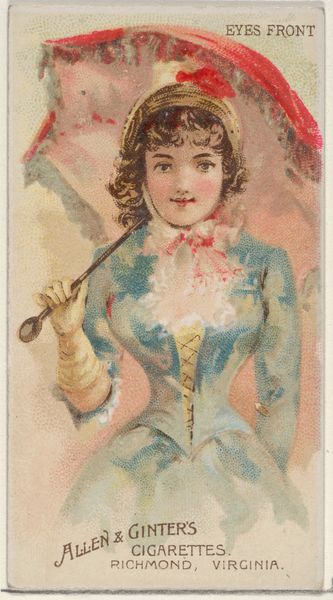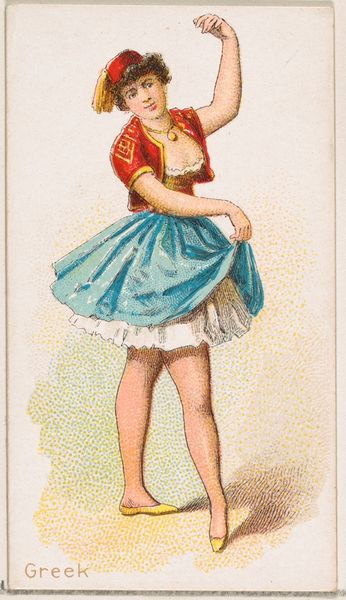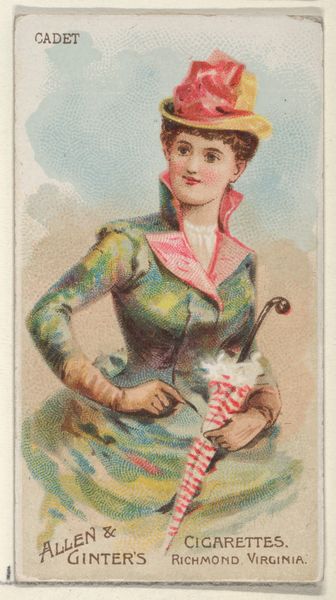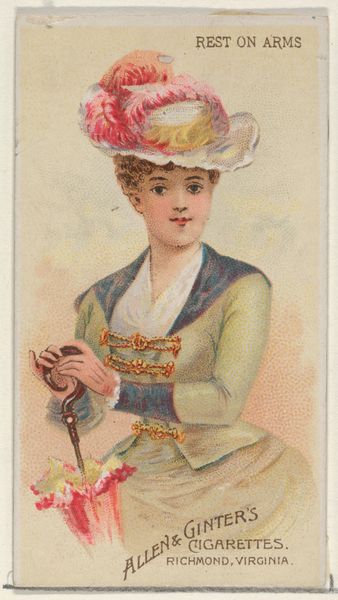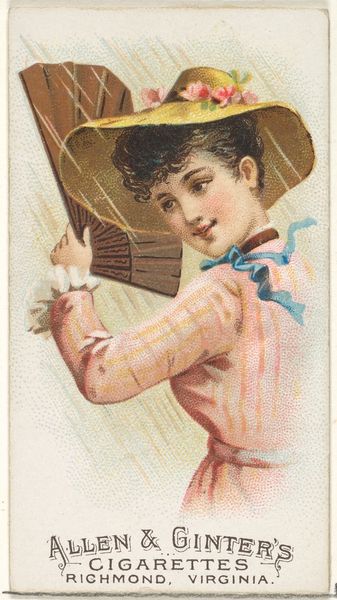
Cymbals, from the Musical Instruments series (N82) for Duke brand cigarettes 1888
0:00
0:00
print, paper
#
portrait
# print
#
figuration
#
paper
#
oil painting
#
coloured pencil
#
portrait drawing
#
watercolour illustration
Dimensions: Sheet: 2 3/4 x 1 1/2 in. (7 x 3.8 cm)
Copyright: Public Domain
Curator: This small print, "Cymbals," produced in 1888 by W. Duke, Sons & Co., was actually part of a series of collectible cards included in Duke brand cigarette packs. These cards, showcasing musical instruments, were hugely popular. What's your immediate reaction to it? Editor: It's strangely cheerful, isn't it? A very ornamented, idealized woman with her cymbals seems... entirely disconnected from the realities of 1888. The over-the-top prettiness is a stark contrast. It almost feels satirical. Curator: Indeed, the image engages with contemporary notions of femininity while subtly serving commercial interests. Duke sought to create a specific image of sophistication and worldliness through the art it promoted. How do you see this aligning with its cultural context? Editor: I see this aligning within the construct of the ideal consumer during the Gilded Age. It is pure aesthetic capitalism, selling aspirations through both the object and the lifestyle that surrounds its purchase, specifically cigarettes. We need to consider the health implications, targeting women during a period of their supposed emancipation. Curator: You're absolutely right to highlight that complicated nexus of aspiration and exploitation. These cards, and tobacco marketing at large, promoted social ideals while masking darker realities about labor practices, public health, and the ethics of mass consumerism. Let's observe Japonisme within it. Editor: You know, looking closely, there is some evidence of it on the light use of stippling within the background, which looks similar to printing methods used in traditional block prints from Japan. But it could also be simply due to printing restraints at that time... Either way, you can almost hear the cymbals clashing. Curator: It really exemplifies how the production and distribution of these "art objects" played a significant role in shaping public tastes and desires during the turn of the century. I have a whole new understanding of its appeal through the lens of class and societal structures of the era. Thank you for that! Editor: Thank you! It helps to highlight this intersection of gender, class, consumerism, and the visual languages which helped produce cultural images. I wonder what impact that had at that time...
Comments
No comments
Be the first to comment and join the conversation on the ultimate creative platform.
